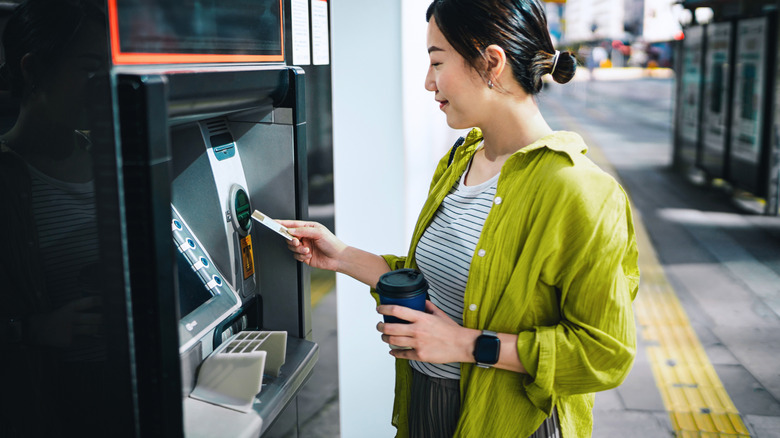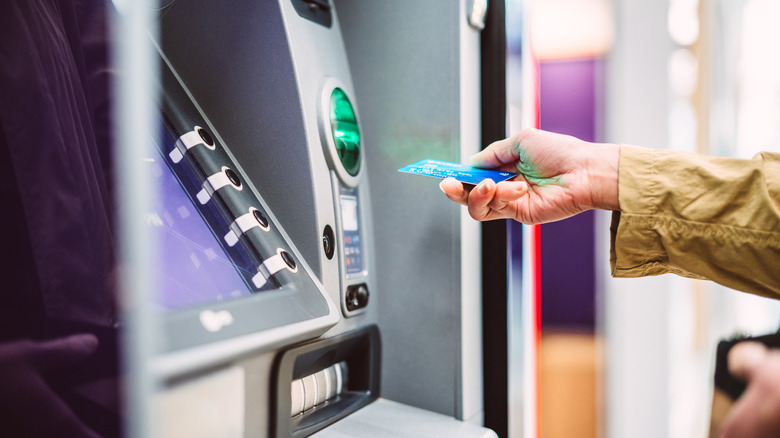Rick Steves' Simple Suggestion Can Protect Your Bank Accounts While Traveling In Europe
Traveling through Europe means an opportunity to get in touch with rich history, diverse cultures, and stunning architecture. Whether you're setting off on a backpacking trip or planning a luxury vacation, the continent is brimming with destinations for every traveler. That said, like with any trip abroad, there are potential pitfalls to watch out for that could easily derail your adventure and turn it into a financial nightmare. One of these concerns is knowing when and how to best protect your finances — especially your bank cards. Because, although you're not necessarily at higher risk for bank fraud overseas, dealing with any type of financial issues while traveling can create a major headache.
Thankfully, travel expert and author Rick Steves has developed a series of practical strategies to help you safeguard your money and enjoy your European adventure with peace of mind. With decades of experience guiding travelers and writing travel guides, Steves knows that preparation is everything when it comes to avoiding common travel mistakes. One of Steves' most important recommendations is all about how you carry and use your cards abroad.
On his blog, Steves suggests that, rather than keeping all your cards on you in the same wallet, the best way to limit your exposure to theft and fraud is to only carry the cards you actually need — and leave the rest safely at home. Additionally, Steves strongly recommends using ATMs as your primary source of cash, since they typically offer better exchange rates than currency exchange services. Combined, these two strategies can significantly reduce your risk of getting caught in a financial bind. That way, you can focus on what really matters: actually enjoying your European adventure.
The best ways to keep your finances secure
In order to ensure maximum protection, Steves emphasizes that securing your finances starts before you've even boarded your plane. The best way to do this is by cleaning out your wallet and bringing only the cards you plan to use during your travels (plus one backup). Once you've picked out the cards you're traveling with and have landed at your destination, you can store all your essential items and documents — this includes credit and debit cards, your passport, and most of your cash — in a money belt you can wear under your clothes (or tuck into the hotel room safe). Meanwhile, you can keep that day's spending money readily available either in your regular wallet or front pocket.
When it comes to using ATMs in Europe, Steves recommends keeping your eyes peeled for any common ATM scams. Before inserting your card, inspect the ATM carefully — especially if it's not located inside a bank. Look for anything that appears loose, crooked, or damaged, as these could be signs of card-skimming devices. Additionally, you'll also want to check the card slot and cash dispenser for anything that might trap your card or money.
Similarly, always be aware of your surroundings when using ATMs. Thieves often work in pairs, with one person creating a distraction while the other steals your cash or takes a peek at your PIN. In most cases, common distraction tactics include simple things like offering to sell you a newspaper while you're in the middle of a transaction, pointing out "dropped" money at your feet, or asking for (fake) charitable donations.
More tips to protect your accounts while traveling
Beyond ATM safety, Steves also recommends specific practices for different types of transactions. For purchases, he suggests avoiding debit cards entirely since they pull money directly from your bank account. That way, if a thief steals and uses your debit card, those charges will remain on your account while your bank investigates — potentially leaving you without access to funds. Instead, he suggests you use credit cards for purchases, as they typically offer better fraud protection and won't immediately impact your available cash.
In terms of transaction security, always keep a close watch on your card — especially while paying for something at a restaurant or shop. Depending on the situation, it's incredibly easy to lose track of your card while you gather your belongings or finish up a conversation, and doing this (even briefly) can create the perfect scenario for a skilled thief to commit fraud and steal your information.
Finally, make sure you monitor your account balances regularly using secure internet connections. Even though most European hotels and cafes offer free Wi-Fi, it's always best if you avoid accessing your bank accounts on public networks. Public Wi-Fi networks are often unsecured, making it easier for cybercriminals to intercept your personal data and login credentials. Instead, try to use your phone's data — purchasing a travel eSIM before your trip is a great way to ensure you have a connection no matter where you go — or wait until you have access to a trusted, password-protected network that'll help prevent hackers from intercepting your financial information and accessing your accounts.


